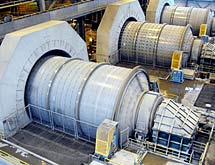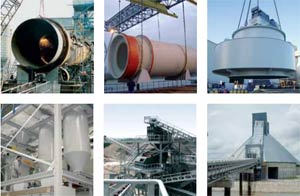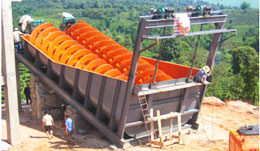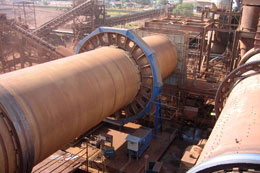-
Sand Making Crusher
- PCL-Vertical Shaft Impact Crusher
- SBM Hydraulic VSI Crusher
- VSI5X Series Impact Crusher
Calcite mineral beneficiation

Physical Separations are those processes where valued substances are separated from undesired substances based on the physical properties of the materials. They include solid-solid and solid-liquid separations. Efficiency in physical separations can be viewed as an overall system efficiency, from the prepared mineral and resulting in a separated product. Typical physical separation processes and their definitions include:
• Flotation - Mineral separation, in which a variety of reagents are added to an agitated and aerated mixture of liquids and solids. This causes certain finely crushed minerals to adhere to air bubbles and to rise to the surface where they enter a froth, leaving the remaining minerals behind.
• Dewatering - Separates solid materials from water in which it is dispersed, performed by equipment such as thickeners, classifiers, hydrocyclones, filters, and centrifuges.
• Thickening or Settling - Reduces the proportion of water in a material by means of sedimentation or elutriation.
• Filtering - Separates suspended solid particles from liquids, or fine dust from air.

• Drying - Removes water using air or heat.
• Flocculation - Selective agglomeration, or adhesion of material components to water or other immicible liquids. In this process, loosely bonded associations of particles and bubbles are formed that are lighter than water.
• Screening - The uses of one or more screens or sieves to separate particles into defined sizes.
• Magnetic Separation - The uses of permanent or electromagnets to separate magnetic particles from other process streams.
• Classification - The separation of particles of various sizes, densities, and shapes through their movement in a fluid. Includes centrifugal separation.
• Washing - Removes ash, shale, sulfur, and other unwanted products from crushed material using water.
- Limestone Crusher
- Barite Crusher
- Granite Crusher
- Kaolinite Crusher
- Calcite Crushing
- Tombarthite Crusher Mill
- Bentonite Grinding Plant
- Basalt Ore Crusher
- Lignite Crusher Mill
- Silica Ore Crusher
- Tin Ore Mine
- Lead and Zinc Ore Crusher
- Ochre Crusher Mill
- Garnet Crusher
- Mica Crusher
- Asbestos Crusher
- Manganese Ore Crusher
- Talc Crusher Mill
- Feldspar Crusher
- Iron Ores Crusher
- Dolomite Crusher
- Quartz Crusher
- Gypsum Crusher
- Calcium Carbonate Grinding
- Calcite mineral beneficiation
- Calcite mineral processing
- Calcite powder manufacturing
- Calcite crusher
- Separation equipments
- Dry equipments
- About Us
- |
- Service
- |
- News & Events
- |
- Contact Us
- |
- Resources
- |
- Showroom
Aggregate Crusher
Artificial Sand Making
Ballast Crushing Machine
Basalt Stone Crusher
Barite Mine Process
Beneficiation Plant
Bentonite Crusher
Bentonite Milling
Calcium Carbonate Crusher
Calcium Carbonate Grinding
Cement Grinding
Concrete Crusher
Coal Crusher
Copper Crusher
Cement Mill
Chrome Mining Process
Copper ore Beneficiation
Coal Processing
Coal Pulvarizer
Feldspar Crushing
Feldspar Grinding
Flotation Machine
Gold Crusher
Gold Mine Equipment
Gold Processing Machinery
Granite Crusher
Granite Crushing Machine
Granite Quarry Equipment
Gypsum Crusher
Gypsum Mining
Gypsum Powder Production
Iron Ore Beneficiation
Iron Ore Crusher
Kaolin Processing Plant
Limestone Crusher
Silica Sand Crusher
Iron Ore Mining Equipment
Cement Production Line
Talc Production Line
Quartz Crushing Machine
Limestone Mining Process
Manganese Benificietion
























